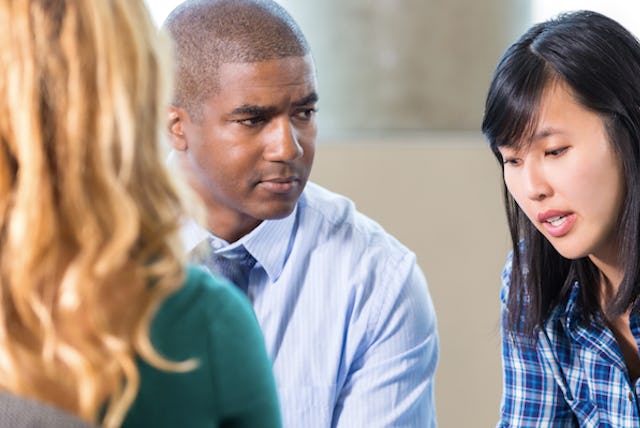Please Stop Mocking The Idea Of Safe Spaces When They Are Valuable To Our Youth

I started working with college students in Minnesota as a graduate assistant. That was 2009. I now work in Oregon and have held a range of different positions over the years (all of them at state universities).
I have been an instructor, an academic counselor, and a learning resource coordinator. I have coordinated numerous summer transitional programs that bridge the gap between high school and college. I have also worked with a wide range of students from low-income, to first generation, to upper class, to student athletes, to underrepresented students. And since the idea of a safe space seems to be getting mocked so often these days, I want to tell you why I call my office a safe space.
I define a safe space as a place where individuals who feel marginalized can come and communicate, openly, without reprisal. It has nothing to do with coddling students, and everything with disarming them so that educators can get to the core of who they are, and then help them find ways to develop into successful, strong, and productive contributors to society.
Those of you who think that it’s a space where students are coddled and babied and given Play-Doh and head pats know very little about what happens in these spaces, and have probably never needed a safe space. Because chances are, you are white, straight, middle to upper class, and feel safe in all spaces.
But the fact is, college is difficult, and a lot of students drop out for reasons that could be handled through university support if they’d only speak up. Often times, underrepresented students don’t reach out because they don’t feel comfortable asking for help. Nor have they ever felt comfortable asking for help. They feel like they should be strong enough to do well on their own. A safe space is where people are given confidence, where their feelings are validated. They are made to feel empowered, not weak.
Powering through on your own isn’t always a true path to success and can ultimately lead to dropping out of college. Help can take a number forms, from seeking out assistance with assignments, to disability testing and accommodations, to counseling, to a place dominated by like-minded people sharing the same struggles.
And you know what, none of that is a bad thing or a sign of weakness. And I get it. In the real working world, many people don’t have the opportunity to find a safe space. The world isn’t all that safe of a place. But that isn’t the point. The point is supporting students through a challenge and building them up, so that when they do go into the real world, they are strong enough to take it on. It’s about helping them find the strength to speak up and present their ideas in the workplace, because ultimately different perspectives lead to new and innovative ideas.
We need different viewpoints and opinions, because ultimately education is about examining ideas through multiple lenses. And that’s one of the more powerful products of a safe space. It’s a place where students can learn how to share their ideas and passions with like-minded people while gathering the confidence needed to go out into a world that doesn’t look or think like they do, and to be more assertive about what they believe.
That’s a good thing!
When a student comes into my office, I want them to feel comfortable enough to discuss what’s going on in their life. I want them to feel safe — because in a safe space, I have the opportunity to encourage their thinking and ideas and help focus them in a productive direction. Feeling safe makes students more likely to take my advice. It empowers them to look around and seek out opportunities and realize that even though they are different from me, we can still work together to help improve their educational outcome, and I can help craft them into the kind of person who will get things done and take advantage of what college, and life, has to offer in a productive way.
I didn’t get into education to tell students to get over it and conform, to bottle up how they feel or who they are. I got into education to help develop students into upstanding adults, full of knowledge, promise, and the ability to contribute a range of ideas in a diverse society. I got into it because teaching students how to use their voices, interests, and opinions in an intelligent and thoughtful way will create a world where all people have the opportunity to thrive, regardless of their ethnicity, race, gender, or socioeconomic class.
That’s the American dream. That’s the reality of it. And I can say, without hesitation, that safe spaces help students — who might otherwise be intimidated to speak up — find their voice through encouragement. It helps them learn how to look objectively at a situation, examine both sides, and realize that their ideas, life, and existence do, in fact, have merit, even if they differ from the majority. In a safe space, students learn how to find comfort with who they are, so that when they go into the working world, they can feel comfortable contributing rather than sitting silent.
Those of you reading this, rolling your eyes, have probably never needed a safe space. That is good. Because the hope is to make everyone feel as confident and safe in their environment as you do. Because if we are going to move this world forward, we are going to need to do it together, and we will need everyone’s voice. We need everyone’s ideas. Because unique thoughts lead to unique innovation, and ultimately that’s what will make America great.
This article was originally published on